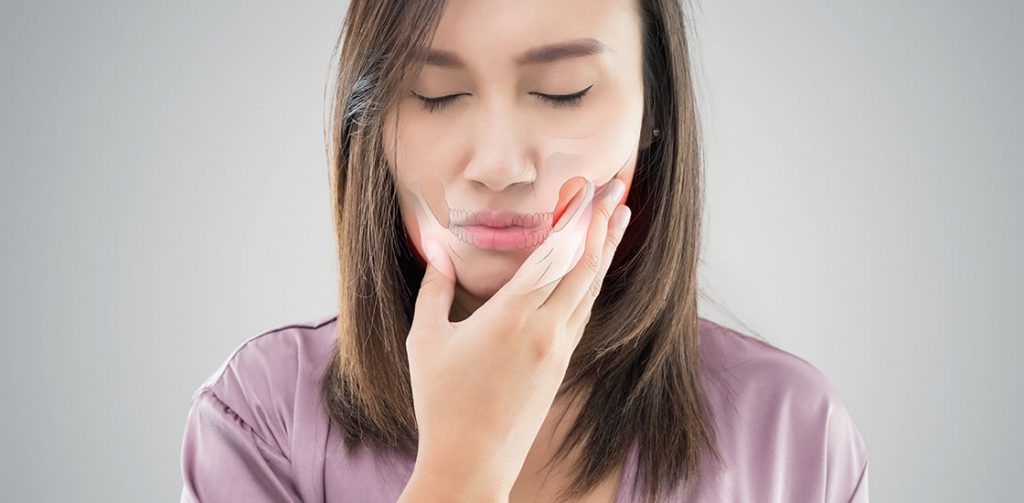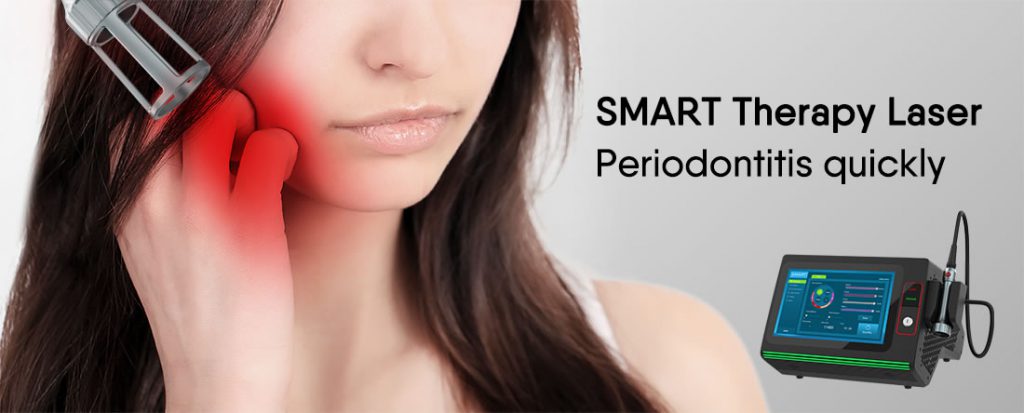Laser periodontal therapy
Periodontal or gum disease is an infection of the supporting tissues and bone that hold your teeth in place. It’s an advanced stage of infection in your gums. If discovered while still in the stage known as gingivitis, it can be reversed with a rigorous oral care routine. But periodontal disease requires professional intervention. The condition mainly affects adults in their 30s and 40s, according to the National Institute of Dental and Craniofacial Research (NICDR).
The risk factors for periodontal disease include:
Poor oral hygiene
Smoking
Chronic illnesses, such as diabete
Certain medications
Genetic susceptibility
Scaling and root planting is the standard treatment for periodontal disease. This non-surgical deep cleaning removes tartar, plaque (biofilm), and bacteria from the tooth at and below the gumline and its roots. It also promotes your gum tissue’s regeneration to grow back snug around your tooth.
Alternatively, your periodontist may decide that a surgical method of treating your periodontal disease is your best therapeutic option. This could be due to the severity of your gum infection. The NIDCR notes that a common surgical option, known as gum flap surgery, entails a surgical cut in the gum tissue. It’s then pulled back to allow deep cleaning around the roots underneath. Your gum tissue is then sutured back into place to heal.
Other surgical options for periodontal disease include bone graftings, soft tissue grafts, guided tissue regeneration, and the application of tissue-stimulating proteins.

Understanding Class 4 laser periodontal therapy
While no one wants to discover they have a gum infection, there is a wide range of treatment options that will depend on individual case’s severity. For example, laser periodontal therapy is a less invasive option than surgery, and it’s gaining popularity.
Class IV dental diode lasers have been introduced as a nonsurgical therapy for periodontal pockets in human dentistry. Dental lasers are utilized for a variety of treatments and procedures, including several therapeutic applications. It is a safe, precise and effective way to treat a specific area of the mouth without damaging surrounding tissue. For procedures that may cause some pain and discomfort, lasers can be used to treat the area, reducing pain and speeding up recovery time.
Common oral health issues treated by class 4 laser therapy
The wavelengths of each laser are different, allowing an appropriate level of power for each type of treatment.
Laser therapy can be used to treat dental issues including:
- Periodontal (gum) disease
- Tooth sensitivity
- Pain and inflammation related to TMJ disorder
Talk to your dentist for more information on how dental lasers can be used to treat and relieve pain associated with any of the above issues.
Benefits of class 4 laser therapy
Laser therapy is not a standalone treatment but works in conjunction with traditional therapies. Class 4 laser therapy works by destroying bacteria and removing damaged tissue from the affected area. The laser emits specific wavelengths of light that can penetrate deep into the tissues, targeting the bacteria that cause periodontal disease. Removing these rough spots mitigates the chance your teeth and gums will attract more bacteria and get future infections.
During class 4 laser therapy for periodontal disease, a dental professional will use a hand-held laser device to direct the laser energy onto the affected area. This therapy can be done in multiple sessions, with each session lasting between 30 minutes to an hour. The duration and frequency of treatment depend on the severity of the patient’s symptoms.
After laser therapy, your mouth will need time to heal and regenerate. During this healing process, your gums should be infection-free and be able to tighten back up around your tooth, like a turtleneck that fits nicely around your neck!
There are several benefits to using lasers for clearing out diseased gum tissue. The four main advantages of using laser therapy to treat gum disease are as follows:
- Recovery and healing times are shorter.
- You won’t need general anesthetic, as is sometimes required for other forms of dental surgery.
- Lasers can target the diseased areas precisely and accurately.
- There’s less bleeding, pain, and swelling because periodontal laser therapy is less invasive than regular surgery.
In conclusion, class 4 laser periodontal therapy is an effective and non-invasive treatment option for periodontal disease. It promotes faster healing times, causes minimal discomfort, and destroys bacteria at the source. If you are experiencing symptoms of periodontal disease, talk to your dental professional about whether class 4 laser therapy could be a good treatment option for you.

“I recently underwent class 4 laser therapy for periodontal disease, and I am thrilled with the results. Before the treatment, I had been experiencing bleeding gums, bad breath, and sensitivity to hot and cold foods. My dentist recommended class 4 laser therapy, and I was willing to try anything to alleviate my symptoms.
The procedure itself was quick and easy. My dentist used a hand-held laser device to direct the laser energy onto my affected gums, and it only took about 30 minutes. The treatment was painless, and I didn’t need any anesthesia or pain medication.
After the treatment, I noticed an immediate improvement in my symptoms. My gums stopped bleeding, and my breath was fresher than ever before. Over the next few days, I experienced less swelling and sensitivity, and my gums looked healthier overall.
Since then, I have continued to experience the benefits of class 4 laser therapy. My gums are stronger and healthier than ever before, and I no longer have to worry about the discomfort and embarrassment of periodontal disease. Overall, I would highly recommend class 4 laser therapy to anyone suffering from periodontal disease.”
—— Emma Smith
[1] Karlsson, M. R., Diogo Löfgren, C. I., & Jansson, H. M. (2008). The effect of laser therapy as an adjunct to non‐surgical periodontal treatment in subjects with chronic periodontitis: A systematic review. Journal of periodontology, 79(11), 2021-2028.
[2] Santonocito S, Polizzi A, Cavalcanti R, Ronsivalle V, Chaurasia A, Spagnuolo G, Isola G. Impact of Laser Therapy on Periodontal and Peri-Implant Diseases. Photobiomodul Photomed Laser Surg. 2022 Jul;40(7):454-462. doi: 10.1089/photob.2021.0191. Epub 2022 Jun 28. PMID: 35763842.
[3] Tetè G, Ferrante L, Moretto M, Rellandini G, Polizzi E. The efficacy of the diode laser at 800-980 nm as an aid to non-surgical therapy in periodontitis treatment: a review of literature. J Biol Regul Homeost Agents. 2021 Jul-Aug;35(4 Suppl. 1):51-63. doi: 10.23812/21-4supp1-5. PMID: 34425660.
[4] Yu S, Zhao X, Zhang Y, Liu Y, Li A, Pei D. Clinical effectiveness of adjunctive diode laser on scaling and root planing in the treatment of periodontitis: is there an optimal combination of usage mode and application regimen? A systematic review and meta-analysis. Lasers Med Sci. 2022 Mar;37(2):759-769. doi: 10.1007/s10103-021-03412-z. Epub 2021 Sep 18. PMID: 34536183.
[5] Fu W, Wo C. The use of laser in dentistry: a narrative review. J Biol Regul Homeost Agents. 2021 Jan-Feb;35(1 Suppl. 1):11-18. PMID: 33463139.
[6] Kellesarian SV, Malignaggi VR, Majoka HA, Al-Kheraif AA, Kellesarian TV, Romanos GE, Javed F. Effect of laser-assisted scaling and root planing on the expression of pro-inflammatory cytokines in the gingival crevicular fluid of patients with chronic periodontitis: A systematic review. Photodiagnosis Photodyn Ther. 2017 Jun;18:63-77. doi: 10.1016/j.pdpdt.2017.02.010. Epub 2017 Feb 21. PMID: 28232271.
[7] Ohsugi Y, Hatasa M, Katagiri S, Hirota T, Shimohira T, Shiba T, Komatsu K, Tsuchiya Y, Fukuba S, Lin P, Toyoshima K, Maekawa S, Niimi H, Iwata T, Aoki A. High-frequency pulsed diode laser irradiation inhibits bone resorption in mice with ligature-induced periodontitis. J Clin Periodontol. 2022 Dec;49(12):1275-1288. doi: 10.1111/jcpe.13695. Epub 2022 Jul 24. PMID: 35817415.
THE SCIENCE AND EVIDENCE BACK IT
Adjunctive laser or antimicrobial photodynamic therapy to non-surgical mechanical instrumentation in patients with untreated periodontitis: A systematic review and meta-analysis
https://pubmed.ncbi.nlm.nih.gov/31859395/
LASER in periodontal treatment: is it an effective treatment or science fiction?
https://pubmed.ncbi.nlm.nih.gov/34586213/
Clinical and biochemical effect of laser as an adjunct to non-surgical treatment of chronic periodontitis
https://pubmed.ncbi.nlm.nih.gov/33715262/
Medical lasers
Professional CLASS 4 high-power laser therapy machine
Home use
Portable handheld cold laser therapy device
Veterinary use
Laser therapy machine, shockwave physical therapy, widely used in animals